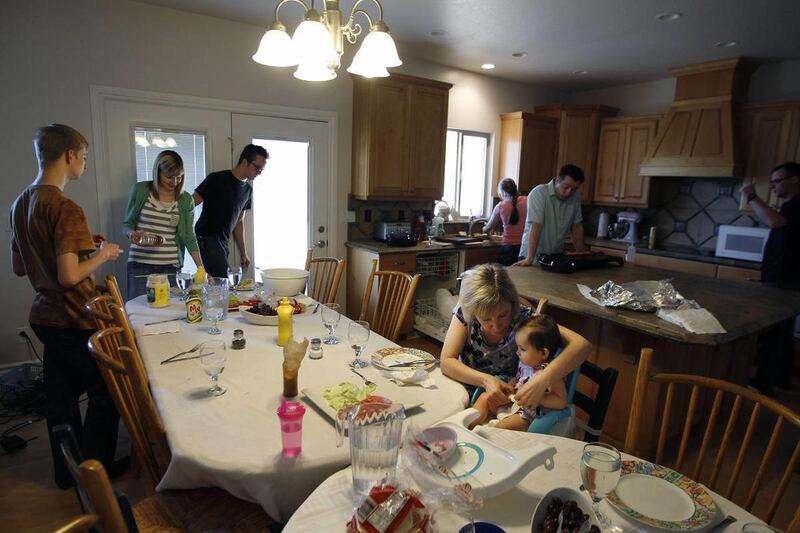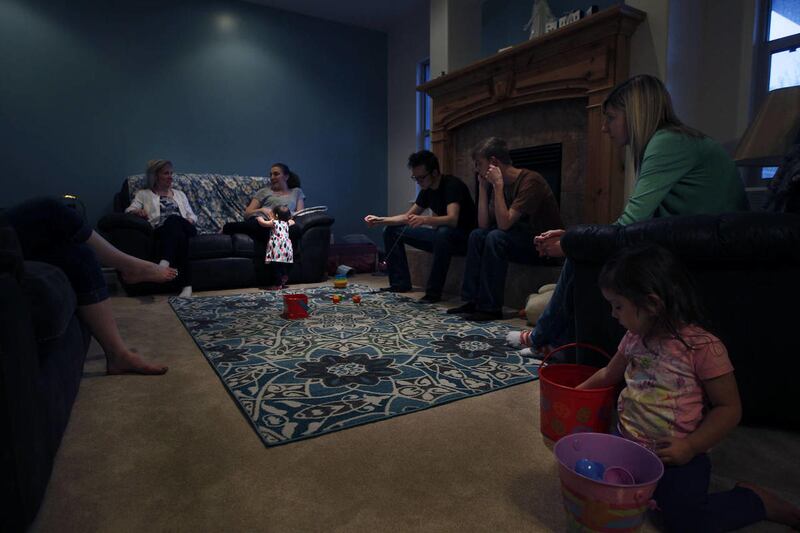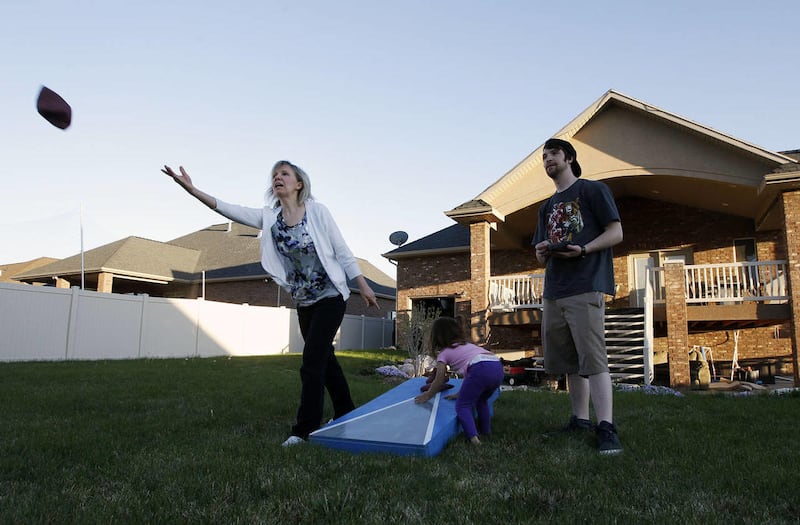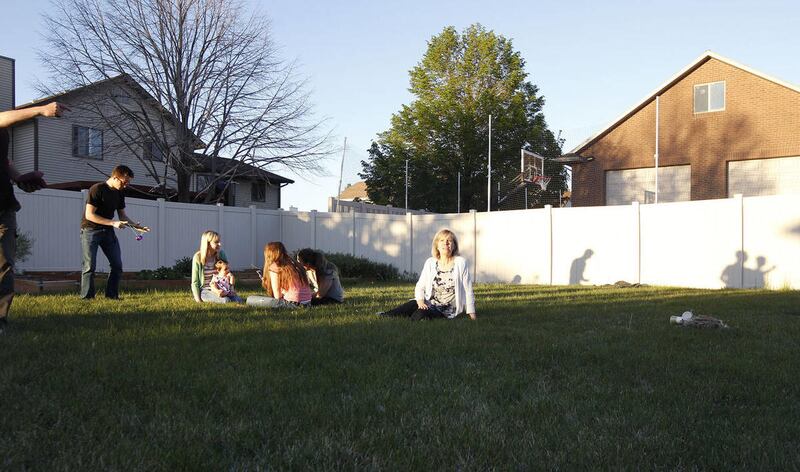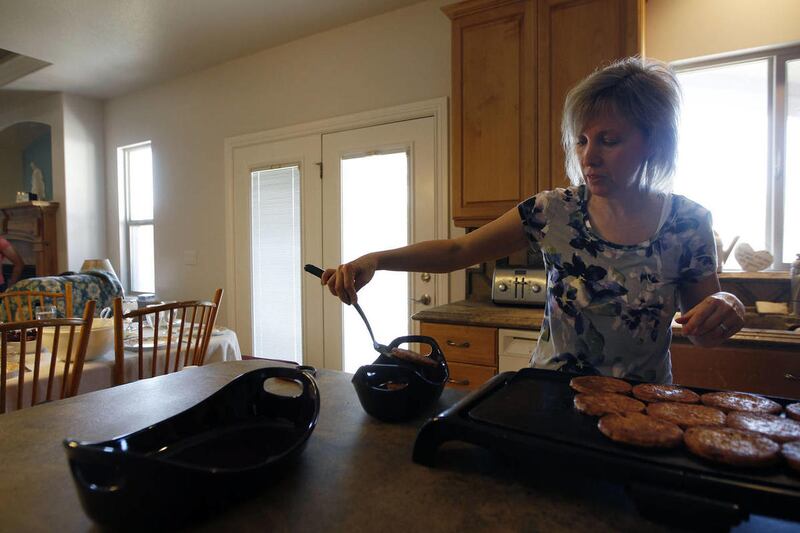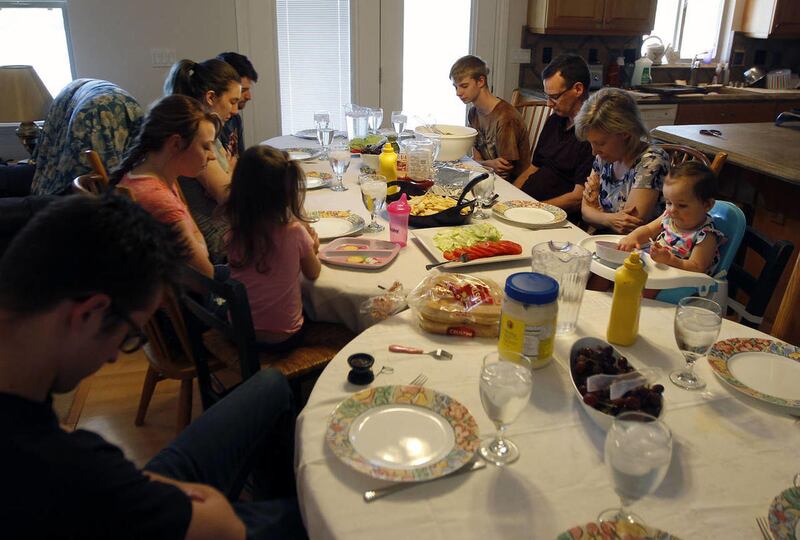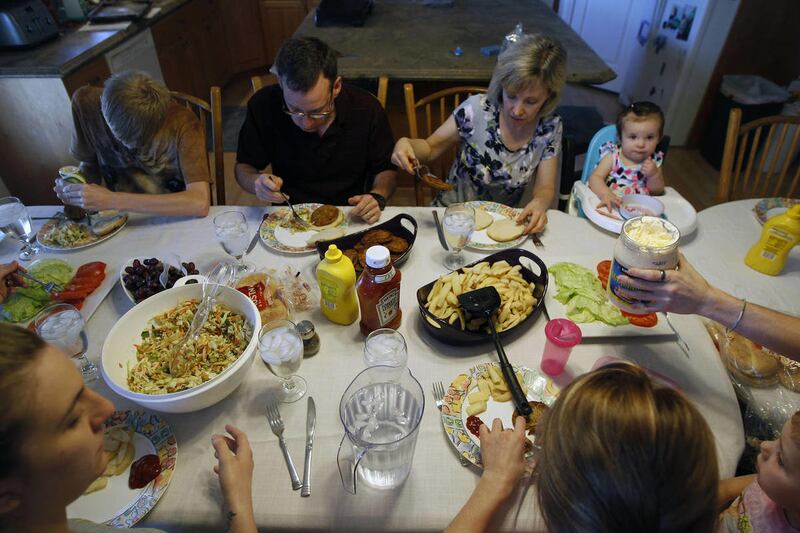After Stephanie and Lance Webb married nearly a decade ago, she baked a cake and they threw a party to mark the birthday of his first wife, Amy, mother of his six kids. They invited her family over.
Breast cancer had taken Amy, and Stephanie, now 52, knew it was important to honor the fact that Amy would always be her stepkids’ mother. She still bakes a cake on Amy’s birthday. And on Mother’s Day weekend, the Webbs visit Amy’s grave in the West Point, Utah, cemetery.
But Mother’s Day also belongs to Stephanie Webb. She has two kids of her own, those six stepkids and is thoroughly loved by Amy’s extended family.
Her successful step relationships are a far cry from the image of the stepmother presented by mythology and Shakespeare and Disney, where the title is typically preceded by “wicked” or “evil.”
“She has been amazing — a very good mother to the children, and I know it hasn’t always been easy. I have never seen a moment’s jealousy on her face,” Lisa Gibby, Amy’s mom, says of her former son-in-law’s second wife. “I think of her as my daughter. I love her. The only time I have trouble is when I’m introducing her. There’s no appropriate title for our relationship.”
Such closeness may seem unusual, but stepmothers and their new families each carve their own path. The Census Bureau says at least 14 million American women have underage stepchildren, and countless more have grown ones. SmartStepfamilies.org says 42 percent of married couples in America with children are “stepcouples.” How well they function depends in part on how hard they’re willing to work at it.
Uphill climb
Research says stepfamilies face some disadvantages. Second marriages, overall, are more prone to dissolution, in part because relationships with children from previous marriages exert pressure. In 2006, the Census Bureau said 67 percent of second and 73 percent of third marriages fail.
Step-parents often get a bad rap, said Kate Roberts, licensed clinical psychologist in Boston and a contributor to EmpoweringParents.com. “But stepmoms get it more because they are typically the home managers.”
Most stereotypes have a grain of truth at their base, and stepmothers are no exception, said Page Thanasui, assistant professor for Stetson University's Marriage, Couple and Family Counseling Program in DeLand, Florida.
Research shows that the best situation for children is typically with both biological parents. Thanasui said studies show kids raised with biological mothers do better than those raised with stepmothers on education and socialization measures.
It’s possible, she said, that “while she is attempting to establish a relationship with her stepchild, the stepmother’s expected role may be ambiguous to all family members. Not knowing where she stands can create confusion and resentment, which affects her relationship with her stepchildren.”
But death and divorce mean many children won't grow up in the ideal intact home with both biological parents. A 2011 report by Pew Research Center said more than 40 percent of American adults have at least one step-relative. “They are just as likely as others to say that family is the most important element of their life,” Pew said. However, the same Pew survey noted a stronger sense of obligation to blood kin.
Talking to stepfamilies who are living it and experts who study it, it's clear blending families can be like making a radish smoothie: You’re mixing things that can go together, but without some adjustment, the result won’t be great. You have a parent and a subsequent spouse. There may be another parent and step-parent in the mix — some with resentments and disagreements about what happens. Experts say it’s easier if what is best for the children takes center stage. That’s true for motherhood in general.
Forming bonds
Isolina Ricci, a San Francisco Bay-area marriage and family therapist, wrote the popular book on blending families, “Mom’s House, Dad’s House” and, more recently, “Co-Parenting Toolkit.”
“Even if the kids are just there on weekends, if they’re treated like members of the family, included in family meetings, share responsibility, etc., it works better. That’s how you feel like you belong," she said. "It gets pretty sticky when it’s the stepmother’s house and she always wants things a certain way.”
And a step-parent must let the biological parent be the disciplinarian.
Erin Balmanno learned quickly that she had to grow into her role as a stepmother when she married Sam three years ago. The 37-year-old Midvale, Utah, mom has a son, 17, a stepdaughter, 16, and a stepson, 12.
She’s had to be patient and let her stepkids work through emotions about their parents’ divorce, she said. The kids live with the Balmannos and their mom lives across the country. They don’t navigate the every-other-weekend juggling some families do, but there’s also an absence that pains the kids. Erin Balmanno loves her stepchildren and initially thought it would help if she just jumped in to mother them.
It was well-received when it came to showing up at school or helping out. Disciplining was a different matter. "I really had to adjust how I approach things," she said. "Now I partner a lot more with my husband. I’m the first one home at night and if something needs handled, instead of reacting as I would with my own son, I say, ‘This is something I need to talk to your dad about. We’ll get back to you with how we need to handle this.’ I’m more successful that way. They are more receptive if it comes from their dad.”
Thanasui said effective stepmoms must learn how to manage role ambiguity, boundary confusion, rejection, lack of biological and psychological ties and/or lack of legal parenting rights that come between step-parents and children.
“The parenting style that is often most effective for step-parents is one that involves a high level of warmth, acceptance and nurturance and a low level of control," she said. "The stepmother can certainly help guide the child and should also be firm about her expectation of respect from the child. She must remember that her actions toward the child should model the level of respect she wishes to receive.”
A huge worry for kids, said Ricci, is whether a stepmom will steal all dad’s time and attention. Children of divorce may already be mourning what they’ve lost. And when a parent has died, children may feel disloyal if they draw close to the step-parent.
Thanasui warns against ever trying to replace a mother. “The stepmother should create her own positive and special relationship with her stepchild” and avoid favoring her own children, she said.
Parental leadership belongs to the natural parent, said Ricci. “If she essentially is there to help dad and the kids when asked, then she has a much greater chance of being that stepmom who is a good friend, valued to go to as someone who is really, really special, but she is not the parent.”
Treating both step and natural children the same is sometimes hard, especially if kids were older when the family blended. Erin Balmanno has known her stepchildren three years and they were pre-teens when they met. She's known her son since birth, sharing the bumps and buoyancy of his childhood. That creates some differences, she said, adding she has learned to recognize each one's personality and adapt. “Not every child needs the same things.”
Ultimately, Balmanno said stepkids need what all kids need: Someone they can rely on, who they know will be in their corner, with love. Whether their parent died or divorced, she suspects they feel cut off or left behind in pretty important ways. “So I have been trying to be consistent and let them know I’m going to be there for them,” she said.
Parental boundaries
Liz Larsen didn’t realize how hard stepmothering would be when she married Steve Larsen seven years ago. It was the first marriage for Liz, now 33, but the second for Steve, 41. His boy Luke was 5 and Parker was 2. Together, they had Hannah, now 3, and a son, Tommy, who died as a baby from a heart defect.
“I feel like I walked into it a little naively, though I absolutely would do it again,” she said. “There are the normal challenges of motherhood, in addition to the challenges of stepmotherhood.”
She knows that the boys’ mother is their No. 1. She understands and even applauds it. She also admits it stings. “I am happy that they’re loyal to their mom. But it is hard. I love them like they're mine.”
Two houses can have two different sets of rules and the kids bounce between them. Sometimes Parker points out that his mother lets him do things his father and stepmother don’t. Sometimes, he reminds Liz she’s not the only boss. “I say, ‘If that’s what your mom wants to do, it’s totally up to her, but these are the rules at my house,’ ” Liz said.
Liz admits she probably overstepped boundaries on occasion, though she tries not to. The kids go to school in the Larsens’ South Jordan, Utah, neighborhood, and their mom picks them up at the Larsen house after school on the days she has them, so both parents see the children and each other often.
After school, Liz helps with homework and takes them to piano lessons and comforts them if they’re sick, but when it’s time to make a decision, it’s not her job. “It really is a hard position to be in,” she said, “especially when you do love and care for them.”
Steve Larsen thinks it may be a little easier because his children were very young when Liz came into their lives. “They’ve both grown up knowing her and having her around. … They have no problem discussing things with her, and she’s a phenomenal listener.”
Ricci tells stepmoms to back off when it comes to being a room mother or soccer mom — “roles that should belong to the natural mom.” The exception is when natural moms don't step up. Even then, tread delicately. “I know you are really busy and I wondered if you would like me to help out at school ….”
Stepmoms should avoid being the spokeswoman to the natural mom about the family schedule or plans, unless the two women have developed a mutually respectful understanding, said family therapist Lisa Bahar of Newport Beach, California. It creates needless conflict.
One of the worst things a step-parent can do is disparage a child’s biological parent. For the children, even the most bitter exes must find a way to cooperate after divorce.
“There are many, many times when stepmoms have to bite their tongues and keep their thoughts to themselves. If you want to say something, talk to the dad, privately," Ricci said. "And be patient, because the transition is going to take several years.”
What’s in a name
In Keaau, Hawaii, where parenting coach Hilary Moses lives, women are called “Auntie” as a sign of respect, and that’s how her stepchildren, 8 and 11, refer to her. Her emotions are mixed. She doesn’t like the baggage of the term “stepmom.” But she wants people to know she’s more than just “Auntie” to the kids who were 18 months and 4 when she married their dad seven years ago.
In an airport security line, one of the boys noted “everyone keeps calling you mom.”
“Yeah, but we know who mom is, right?” she responded.
“Both boys looked at me, they were 9 and 6 at the time, and said, 'I don’t mind that they call you that,’ ” she said. “It still melts my heart.” She recommends talking to stepkids about what they want to call you.
Stephanie Webb learned to make salsa, because her husband's first wife, Amy, did. Beyond that, she’s tried to be herself. “I’m very different than what she was,” she said. “I have to be able to be myself but still honor their loss. The youngest was 6 when we got married and I think he was the only one who was very vocal. I made the peanut butter and jelly sandwich wrong and he wasn’t going to eat it. I made the hot chocolate wrong. 'Do you even know how we make hot chocolate in our house?' he asked."
Most step-parenting advice is about parenting. “Listen, listen, listen,” said Moses, “with genuine interest. … You do not need to solve things, but you can say, ‘Hey, if you want my opinion or ideas on how to get through this, let me know.’ Invite them to invite you into the process, rather than diving into a lecture or teaching moment.”
Finally, Moses adds, even though you are not the primary parent, “Remember, your job is still to act like the adult you hope he or she becomes when they are old.” Be a role model. Apologize and acknowledge mistakes. Any set of parents face tug-of-wars over parenting style and need to communicate and compromise, she said.
“It is important to intimately and courageously know your own buttons and your own baggage,” said Moses. Mostly, she said, in all your human relationships, “appreciate, appreciate, appreciate.“
Email: lois@deseretnews.com, Twitter: Loisco




